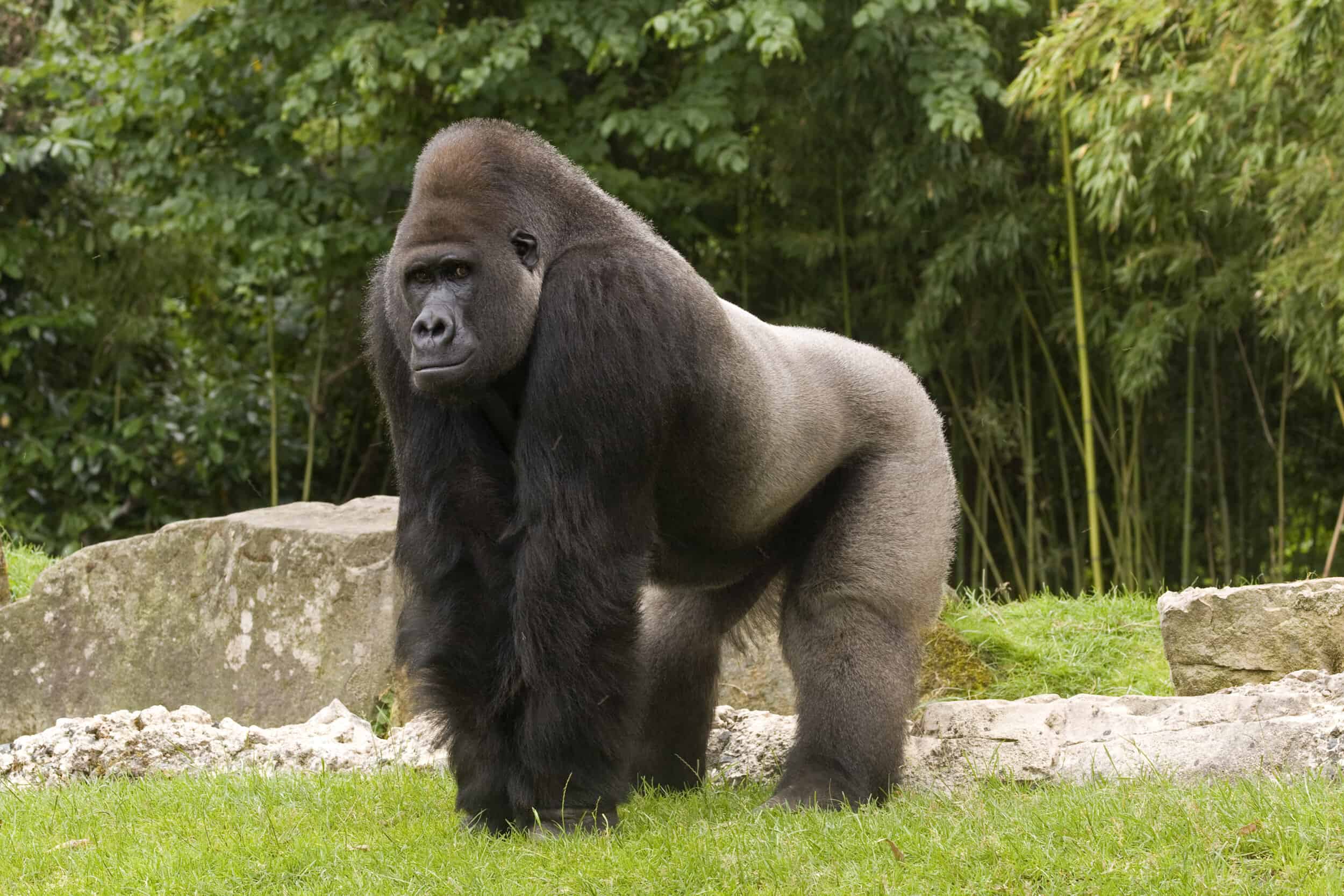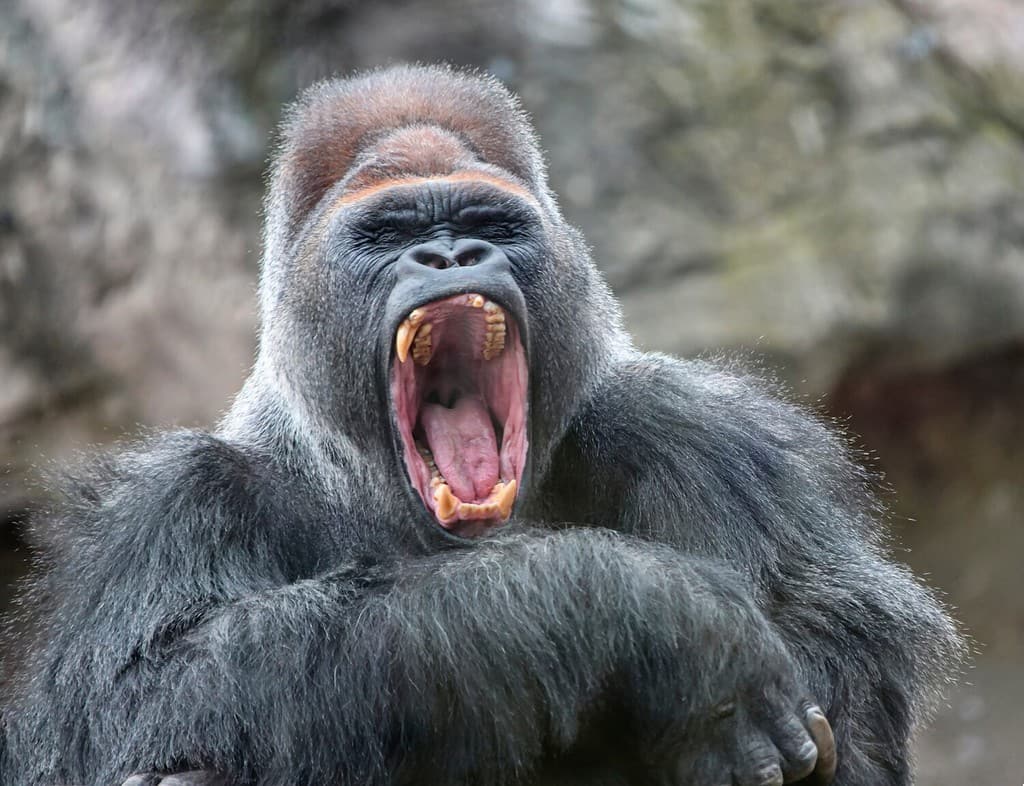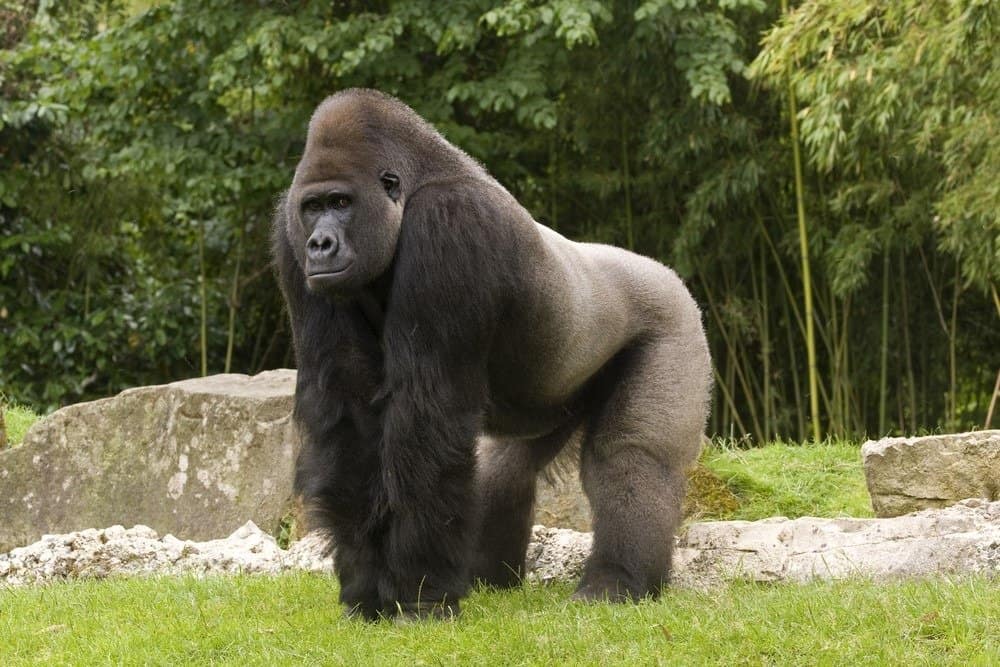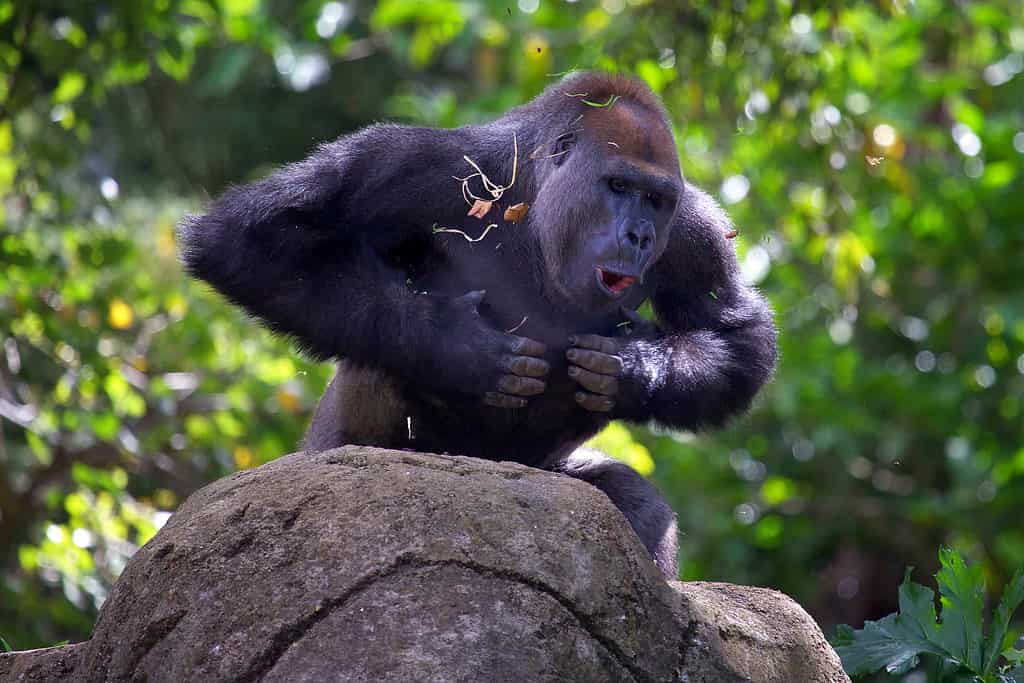Continue reading for our analysis...

Gorillas are stalwarts of the jungle, often taking the cake as “the last thing you’d want to see in the wild.”
Why? Because they’re huge, stronger than you, and potentially aggressive. You could get lucky and have a sort of “Jane Goodall” experience with a gentle wild gorilla, but are you going to stick around to find out?
The point is, that we admire these great apes for their intelligence, strength, and sheer beauty. That’s why it’s so exciting to see examples of their social nature on video.
We’re going to look at two male gorillas vying for power inside a zoo. One is a budding male who’s just testing his boundaries, and the other is a massive adult who could really care less about the little guy tugging at his sleeve.
In any case, the smaller male makes a move and is quickly put in his place.

Gorillas are huge, strong, and potentially aggressive.
©Okyela/Shutterstock.com
What’s Really Happening in the Video?
Gorillas live in colonies with clear social hierarchies. These colonies are non-territorial and constantly shifting in search of food.
They don’t have a particular region to occupy, but they keep their social network in tight order. The order of the gorilla society ensures their strength and protection. Groups range from two to upwards of 30 individuals.
Most of these groups only have one or two males, and these males have silver spots on their backs. The remaining gorillas are females.
Usually, the oldest and strongest male takes his role as the leader. As a result, he has control over breeding and protection. Both males and females tend to migrate to different gorilla colonies after they reach sexual maturity.
This leads to a diversity of the species and higher rates of survival on a large scale. It also means that newcomers are regularly entering groups and struggling to establish themselves in the hierarchy.

The oldest, strongest male usually takes his role as the leader of a group and controls breeding and protection.
©Andreas Rose/Shutterstock.com
The Power Struggle
A newly matured male might struggle to be the top gorilla in the colony. This happens through violence in some cases, but these apes are far more social and nuanced than you might think.
A large part of the power comes from social values and general respect. Gorillas might earn respect through their ability to defend the group or socialize well with the largest number of others, for example.
The real test is the approval of the females. If the females of the group form a consensus on the leader, that individual will rise to power in most cases. If a new, younger gorilla takes power, that individual will eliminate the existing children of the previous leader to make space for his own children. So, the stakes are high.
The video below might not be a full-fledged power grab, but the younger gorilla is certainly testing the waters. He’s getting familiar with the older male to assess where he stands.
Unfortunately for him, he doesn’t have the courage to stand his ground. It’s probably for good reason, too, because the older gorilla in this video looks pretty tough.

A newly matured male may challenge the leader to be the top gorilla in a colony.
©iStock.com/hypergurl
How Many Gorillas Are Left in the Wild?
While most people are familiar with seeing gorillas in zoos, there are still some in the wild — although the number is shrinking. In fact, because of habitat loss, disease, and poaching, the International Union for Conservation of Nature (IUCN) categorizes all gorilla species as endangered. The number of western gorillas in the wild is thought to be around 316,000, and the number of eastern gorillas is a mere 5,000. While these numbers are concerning, thankfully because of actions taken by groups like the Great Ape Survival Project, which is a collaboration between UNESCO and the United Nations Environment Programme, there are steps being taken to prevent these amazing animals from being extinct.
Thank you for reading! Have some feedback for us? Contact the AZ Animals editorial team.






